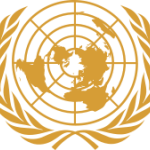- Sektör: NGO
- Number of terms: 31364
- Number of blossaries: 0
- Company Profile:
The United Nations Organization (UNO), or simply United Nations (UN), is an international organization whose stated aims are facilitating cooperation in international law, international security, economic development, social progress, human rights, and the achieving of world peace.
1. Net capital formation of fixed capital and changes in inventories minus imputed environmental cost of depletion and degradation; 2. An alternative definition, sometimes termed Net Capital Accumulation includes also discoveries or transfers (from the environment to the economy) of natural resources and their natural growth. Negative ECF is considered as an indicator of non-sustainable economic performance and growth.
Industry:Environment
Organic or inorganic substances containing chemical elements that improve the growth of plants and the fertility of the soil. The percentage content of nutrients in organic fertilizers (manures) is relatively low. In inorganic or mineral fertilizers, the nutrients are inorganic salts, obtained by extraction and/or physical and chemical processes. The three primary plant nutrients are nitrogen, phosphorus and potassium.
Industry:Environment
Concept proposed for the valuation of the depletion of mineral deposits (El Serafy, 1989), according to which a time-bound stream of net revenues from the sale of an exhaustible natural resource is converted into a permanent income stream by investing part of the revenues, that is, the user cost allowance, over the lifetime of the resource. The remaining amount of the revenue is regarded as true income. See market valuation
Industry:Environment
Compound formed when the hydrogen in a hydrocarbon molecule, such as methane, is replaced by any of the halogens (fluorine, chlorine, bromine and iodine). Their breakdown in the stratosphere releases chlorine and bromine which take part actively in the destruction of stratospheric ozone. The best known group of halogenated hydrocarbons are the chloro-fluorocarbons (CFCs). The brominated compounds are referred to as halons.
Industry:Environment
Volume changes in natural assets, based on economic decisions or interest, thus distinct from non-economic causes of asset change, e.g. by political or natural events or disasters. O.a. includes, for example, discoveries of natural resources, natural growth of economic assets and changes in land use. Added to Environmentally-adjusted net Capital Formation (ECF), a broader indicator of Net Capital Accumulation (NCA) is obtained.
Industry:Environment
Disease caused by infestation with the filarial worm Onchocerca volvulus, which is transmitted to humans through the bite of the blackfly of the genus Simulium. The vector of the disease, which is also known as river blindness, is a major public health problem in many tropical countries. The severity of onchocerciasis is usually greatest in rural settlements near rivers and streams which are the breeding sites of the blackfly.
Industry:Environment
For renewable resources, the part of the harvest, logging, catch and so forth above the sustainable level of the resource stock; for non-renewable resources, the quantity of resources extracted. In the SNA it is defined as the reduction in value of deposits of subsoil assets, natural forests, fish stocks in the open seas and other non-cultivated biological resources as a result of the physical removal and using up of the assets.
Industry:Environment
Taxa in danger of extinction and whose survival is unlikely if causal factors continue operating. Included are taxa whose numbers have been drastically reduced to a critical level or whose habitats have been so drastically impaired that they are deemed to be in immediate danger of extinction. Also included are those that possibly are already extinct, in so far as they definitely have not been seen in the wild in the past 50 years.
Industry:Environment
Process of enlarging people's choices. Their three essential choices are to lead a long and healthy life, to acquire knowledge and to have access to the resources needed for a decent standard of living. Additional choices, highly valued by many people, range from political, economic and social freedom to opportunities for being creative and productive and enjoying personal self-respect and guaranteed human rights (UNDP, 1995).
Industry:Environment
Moulds, mildews, yeasts, mushrooms and puffballs. The fungi are a group of organisms that lack chlorophyll (in other words, they are not photosynthetic) and are usually non-mobile, filamentous and multicellular. Some grow in the ground; others attach themselves to decaying trees and other plants. Fungi obtain their nutrition from decomposing organic matter. Some cause disease; others stabilize sewage and break down solid wastes in composting.
Industry:Environment
